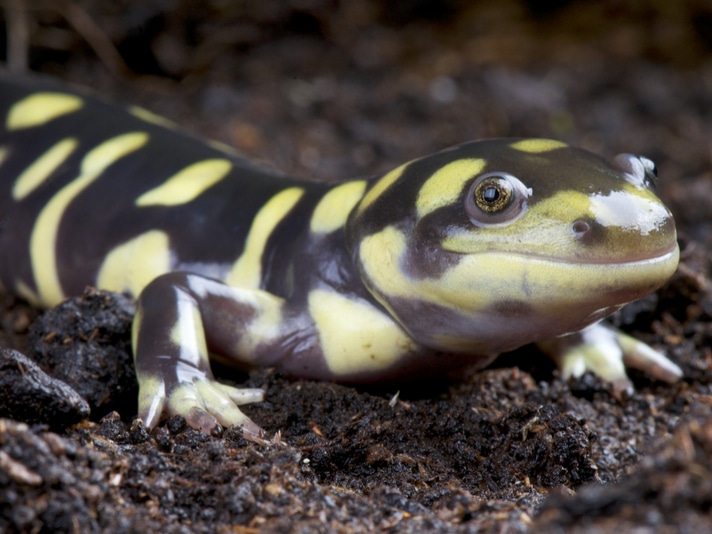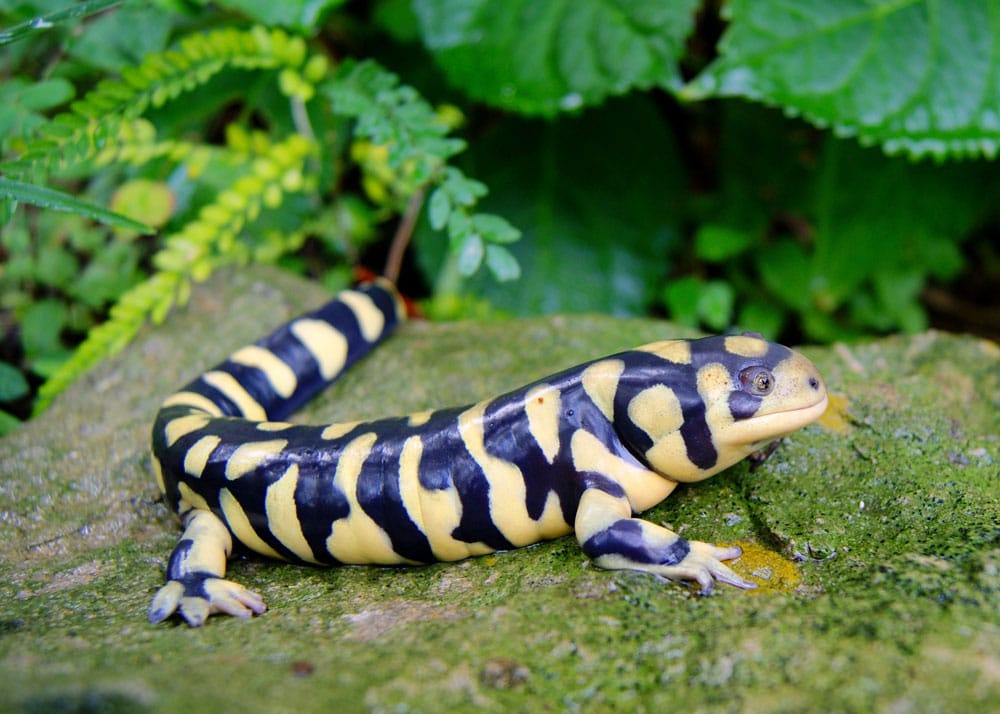Tunnels constructed in 2011 help some 100 plus endangered Ambystoma californiense get to their breeding pond.
In October 2011, three tunnels were constructed under Stony Point Road near Cotati, Calif., in an effort to get California tiger salamanders (Ambystoma californiense) to use the tunnels instead of the road to get to their breeding pond. Prior to 2011, the salamanders had to cross the busy road, which resulted in a 5 to 25 percent mortality rate. According to a report in the Press Democrat, the tunnels appear to be a success and the salamanders are using them to get to the pond.

reptiles4all/Shutterstock
“I haven’t analyzed all the data. Everything is preliminary, but just a broad general conclusion is these crossing tunnels are working. They are functional, and salamanders are using them,” Tracy Bain, a graduate student at Sonoma State University told the paper. Bain and a group of Sonoma State University undergraduate students have been tracking the salamanders’ use of the tunnels since the tunnels were constructed in 2011. The road has been blocked with fencing in an effort to prevent the animals from crossing, and the fencing creates a pathway that leads them to the tunnels.
The tunnels, constructed with 35 foot steel pipes, were built under the road by the county’s public works department and water agency with funds from a $10 million Caltrans grant for environmental restoration projects. Early in 2012, Bain couldn’t gauge whether the tunnels were working as designed because there wasn’t enough rainfall to spur the amphibians to move toward the pond. As rain became more frequent at the end of the year and early in 2013, the salamanders began using the tunnels with greater frequency. The salamanders are listed as vulnerable on the IUCN Red List and in 2003 were listed as an Endangered Species by the U.S. Fish and Wildlife Service. In April 2012, the Center for Biological Diversity sued the U.S. Fish and Wildlife Service for failing to develop and implement a recovery plan for the amphibian. In December 2012, U.S. Fish and Wildlife Service announced a recovery plan for three distinct populations of California tiger salamanders in Santa Barbara, Sonoma, and central California. All three recovery plans are expected to be in place by June 2017.
The California tiger salamander lives in grassland habitat as well as valley-foothill and hardwood areas. It can be found in the northern California counties of Petaluma, Sonoma, the Central Valley, Yolo, Sacramento, Tulare, the San Francisco bay area, and Santa Barbara counties. It feeds on earthworms, snails, insects, small fish and even small mammals such as mice.
John B. Virata keeps a western hognose snake, a ball python, two corn snakes, a king snake, and two leopard geckos. His first snake, a California kingsnake, was purchased at the Pet Place in Westminster, CA for $5. His first pet reptile was a green anole that arrived in a small box via mail order. Follow him on Twitter @johnvirata


